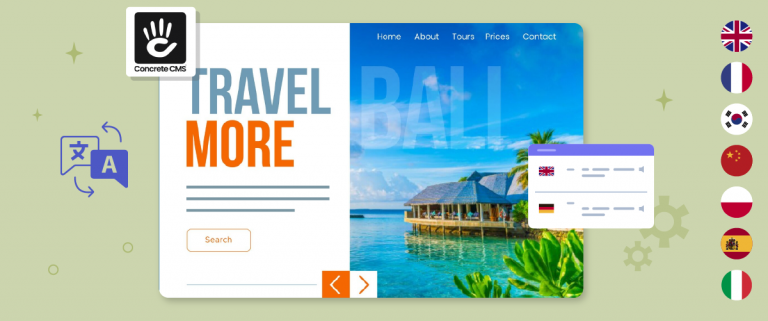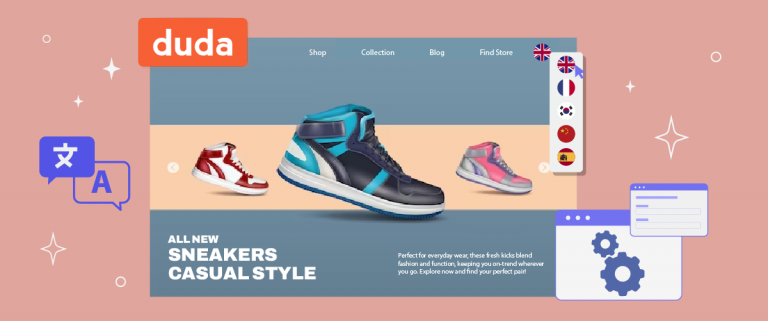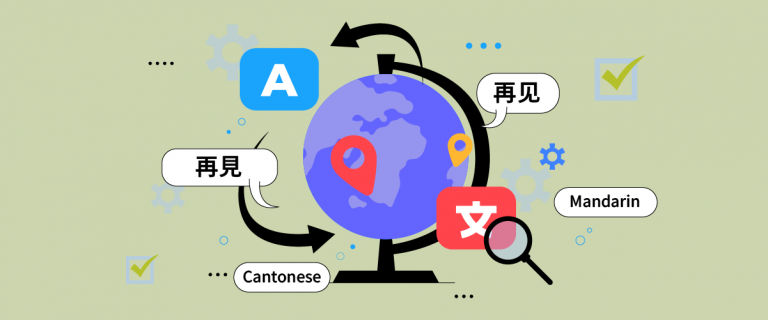Ever thought of having customers from all over the world? With international digital marketing, that dream is no longer a fantasy. We’ll cover everything you need to know to build your brand globally. Ready to expand your business?
In this guide, we’ll cover everything you need to know about international digital marketing, from the benefits to key strategies and how to implement them. Let’s start.
The benefit of international digital marketing for your business

Before discussing key strategies further, businesses will learn some of the benefits of international digital marketing.
Wider market reach – Limiting your business to only the local market can cause you to miss numerous opportunities. Through international digital marketing, your business can reach potential customers from various parts of the world. Your business website will be accessible 24/7 to potential buyers from different countries, opening up time-unlimited transaction opportunities. This differs from traditional businesses, which are restricted to specific operating hours.
Closer relationship with customers – International digital marketing allows you to adapt content to each country’s culture and customs. Customers feel more appreciated and comfortable when they feel your business understands and respects their culture. This creates a more personal relationship, encouraging them to become loyal customers likely to return and shop at your business.
Marketing cost efficiency – According to a report from Gartner, 40% of small businesses have significantly reduced costs simply by using digital marketing strategies. Based on this data, digital marketing offers a much more cost-effective solution. You can measure each campaign’s effectiveness through various digital metrics. If a strategy proves less effective, you can quickly adjust without incurring additional costs.
Learning and business development – By expanding into international markets, you will gain new insights into various cultures, diverse consumer preferences, and global market trends. This experience is invaluable for future business growth and will make your business more adaptable to market changes.
Top 10+ key international digital marketing strategies for your business
Understanding that international digital marketing is not just about translating content into different languages is important. It’s about making your business accessible and trustworthy to customers from various countries and cultures. Let’s go over some key strategies.
Global search engine optimization

People who search for products or services online typically use search engines in their language. For instance, someone in Japan might search for “スポーツシューズ” instead of “sports shoes.” Therefore, optimizing your website is crucial to find it easily across different countries.
You’ll need to conduct international keyword research relevant to each target country. For example, if you sell bags, the keyword “handbag” may be popular in the U.S., but in the U.K., people are more likely to search for “purse.” These subtle differences can significantly impact your online visibility.
Technical adjustments are also necessary, such as using the correct URL structure (e.g., www.yoursite.com/jp/ for the Japanese version) and adding hreflang tags to help Google display the right version of your site to visitors from different countries.
Multilingual website optimization
A multilingual website goes beyond simply translating content into other languages. It should create a seamless experience for visitors from various countries. Imagine visiting an online store from another country—you’ll feel more comfortable if prices are shown in your local currency and product information is in your language.
Additionally, website design should align with local reading habits. For example, the layout needs adjusting in Arabic-speaking countries where text flows from right to left. Color choices are also essential. For instance, red symbolizes luck in China, but it may have different meanings in other cultures.
A successful example of this strategy is IKEA’s website, which offers localized versions for each country. They translate content and adapt displayed products based on local preferences and seasons, creating a more welcoming shopping experience.
To facilitate this, high-quality website translation tools like Linguise are essential. This tool provides key features such as:
- Automatic detection and translation with 97% accurate translations
- Website translation into 85 languages
- Easy content editing and localization through a front-end live editor
Here is the example of multilingual website that using Linguise for translating website content.

Search-based marketing
Search-based marketing involves paid ads on search engines like Google Ads or Baidu (for the Chinese market). This strategy lets you reach potential customers who are actively searching for your products or services.
A key to search-based marketing is understanding search behavior in each country. For instance, in South Korea, Naver is more popular than Google, so if you’re targeting the Korean market, it’s beneficial to advertise on Naver and optimize for it.
A notable example is Netflix, which adjusts its ad keywords for each country. In Indonesia, they use keywords like “nonton film online,” while in Malaysia, they use “tonton filem dalam talian.”
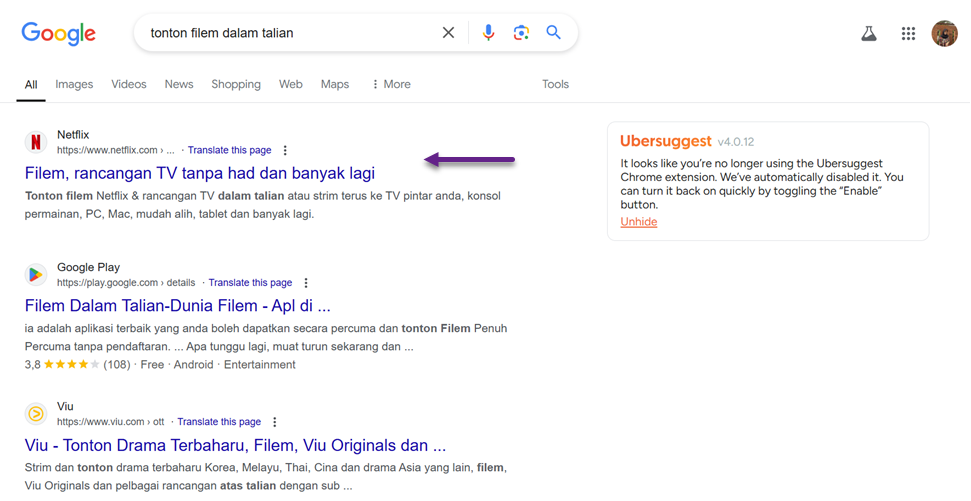
Cross-cultural content strategy
Each culture has its values, humor, and communication style. For instance, humorous ads might be well-received in the U.S. but less effective in more conservative countries. McDonald’s is a prime example of successful cross-cultural content adaptation. They offer vegetarian options in India and use local spices to honor cultural preferences. Their marketing content also highlights values that are important in Indian culture.
Small details like symbols and images are essential, too. While using dog images in marketing content might be popular in the West, it could be poorly received in some Muslim-majority countries.
Localized social media marketing
Each country has its preferred social media platforms. In China, WeChat dominates; in Japan and Thailand, LINE is popular; while WhatsApp is more common in Indonesia and India. Understanding the favored platform in your target country is crucial. Ikea has successfully implemented this strategy by creating separate multilingual social media accounts for each country and translating and adapting content to fit each market’s communication style.
Here are the captured Instagram IKEA Japan and Indonesia.
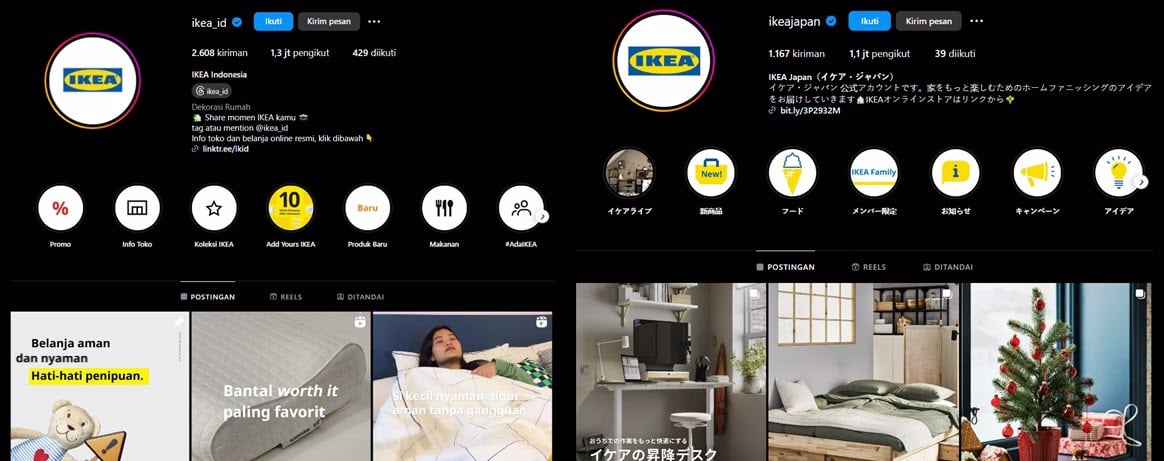
And also, posting times should also align with local time zones and social habits. For example, peak social media hours in Indonesia differ from those in Europe, so adjusting posting schedules can maximize engagement.
Optimize reputation management
Managing online reputation is about more than positive reviews—it’s also about responding to negative feedback appropriately. In Japan, customers value polite and prompt responses, while in Brazil, a more relaxed and personal approach is appreciated. Review platforms vary by country; TripAdvisor is key for tourism in the U.S., but in China, Dianping holds more influence. Understanding which platforms are most relevant for your industry and target market.
Monitor reviews across platforms like social media, Google Business Profile, and eCommerce sites, and respond to feedback from users who have tried your product or service.

Influencer & affiliate collaboration
Partnering with local influencers is highly effective since they already have the trust of your target audience. However, choosing influencers who align with your brand values is essential. Sephora has excelled with this approach, collaborating with local beauty influencers in various countries. They work with beauty vloggers in Indonesia who understand local skincare needs and makeup preferences.
Affiliate programs can also be beneficial, but tailoring them to the local market is important. Incentives that work well in one country may not be as attractive in another, so understanding local norms and expectations is key.
As in this Tiffany & Co. jewelry brand that collaborates with famous actresses at a certain moment.

Personalized email marketing
With 81% of businesses using email as part of their branding strategy, personalized email marketing can be a powerful tool, especially when tailored to each country’s cultural preferences and email-reading habits. Email engagement habits differ across regions—for example, email in Europe and Asia often follows different timing norms. The best times to send emails also vary by country; in Japan, business emails are frequently read in the morning before work.
Taking cultural nuances into account can significantly boost open rates and engagement. Many companies leverage email marketing internationally by using localized timing and content, creating a more relevant experience for each audience.

Using marketing automation
Automation is essential for managing campaigns across multiple countries efficiently. With automated tools, you can schedule emails to be sent at the right local times. Spotify utilizes automation to provide personalized playlists and music recommendations tailored to regional preferences. Their system automatically adjusts content based on trending music in each country.
Automation tools also allow tracking customer interactions across channels and regions, enabling businesses to deliver a consistent and personalized experience across markets.
Customer experience management
Providing a great customer experience can significantly increase customer satisfaction—86% of buyers are willing to pay more for exceptional service. Adapting customer experiences to meet local expectations is crucial. For instance, customers in Japan often expect highly polite and formal service, whereas Australian customers may prefer a friendly, relaxed approach.
Starbucks has successfully implemented localized customer experiences by offering app-based delivery in China to suit the highly digital consumer base and by designing luxurious stores in Italy to honor the country’s deep-rooted coffee culture. Similarly, brands like Samsung ensure local-language support and time-zone-specific customer service with local teams who understand the cultural nuances of each region.
Monitor & evaluate

Monitoring and evaluating international campaigns require a comprehensive approach, as success metrics can vary significantly across regions. A conversion rate of 2% may be considered excellent in one country but low in another. In addition to sales figures, tracking other relevant metrics like brand sentiment, social media engagement, and region-specific performance indicators is essential to fully understand each market’s response.
Analytic tools should also be adapted to fit each country’s ecosystem. For example, while Google Analytics works well in many regions, it may not be optimal in China due to internet restrictions, where local tools like Baidu Analytics provide a more accurate picture of campaign performance.
4 Steps for implementing international digital marketing

Perform market analysis
Understanding your target market in depth is the first essential step. This involves studying online shopping behaviors, popular digital platforms, and local cultural values. For instance, when entering the Japanese market, it’s crucial to recognize that Japanese consumers value product detail and superior customer service. Additionally, market analysis should include a look into local competitors and their customer engagement strategies, helping you identify key differentiators for your brand.
Define your goals
Each market requires specific and measurable goals tailored to the country’s growth stage in your business strategy. For new markets, the focus might be on brand awareness, whereas in mature markets, goals could shift to increasing sales or customer loyalty. For example, when Netflix entered Indonesia, its initial goal was to build brand awareness and acquire new users. With an established solid user base, it shifted its goals to customer retention and promoting regular platform use.
Establish the scope
Setting clear boundaries for your international marketing strategy, including which countries or regions to target and the resources needed for each market. Scope decisions also encompass product or service offerings for each region. IKEA exemplifies this by adjusting its product catalog to fit local home sizes and design preferences, creating a relevant and appealing product selection for each market.
Select suitable strategies
Your strategy should be based on the most effective ways to reach your target market in each country. This could include a mix of channels like SEO, social media, and email marketing, adapted to local preferences. For example, in China, digital marketing strategies should focus on local platforms like WeChat and Weibo, as platforms like Facebook and Instagram are inaccessible. It is essential to consider the budget and resources available when finalizing strategies, ensuring they align with each market’s specific demands.
Digital marketing mistakes to avoid

Here are some things you should avoid when implementing international digital marketing.
- Lack of clear objective: Starting a digital marketing campaign without a defined objective is like navigating without a compass—you’ll have no clear direction. Set specific targets, such as increasing sales by 20% or gaining 1,000 new followers within three months. Clear, measurable goals provide a benchmark for assessing effectiveness, enabling your team to make necessary adjustments and measure success accurately.
- Not understanding your audience: Avoid overlooking the importance of deeply understanding your target audience. This includes their age, location, habits, and challenges they face. Tailor your content and strategies to resonate with these unique characteristics, ensuring that your message aligns with your audience’s needs, thus increasing engagement and relevance.
- Ignoring data analysis: Tracking metrics like engagement rate, conversion rate, and ROI is essential to gauge campaign performance. Regular data analysis empowers you to make informed, fact-based decisions, clarify assumptions, and ensure your strategies evolve based on real results rather than guesswork.
- Over-reliance on one channel: Relying too heavily on a single marketing channel is risky, as a decline in its performance can significantly impact your results. Maintain a presence across multiple relevant platforms to reach a broader audience and mitigate the risks associated with fluctuating platform performance. Diversifying your marketing channels ensures a more stable and resilient brand reach.
Conclusion
International digital marketing offers opportunities to your businesses looking to expand their reach. However, it’s crucial to remember that international digital marketing is more than just translation. It requires a deep understanding of local markets, consumer behaviors, and the digital landscape.
With Linguise, you can easily translate your website’s content into multiple languages, ensuring your message resonates with worldwide audiences. Create your Linguise account, start your international digital marketing journey with Linguise, and unlock your business’s full potential.


